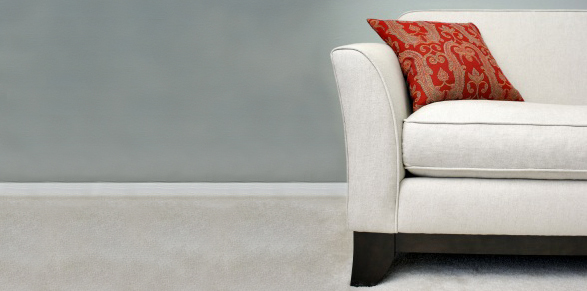Nothing does a makeover better than reupholstery. Whether it’s a flea market find, a prized antique settee, or simply a favorite couch a little worn from use, your furniture will always look fresh with new fabric. So where do you begin?
Fabric first.
Look for upholstery grade fabric. Thinner materials like organza or fine silk won’t hold up to the wear, and many times require a fabric backing.
Dress your furniture as you would yourself. Use solid or small prints for your bigger pieces and bolder, brighter patterns for accents.
Feel the fabric. No one wants to nap on a scratchy surface, regardless of how beautiful the pattern.
Get creative. Use a suzani quilt for an antique chair or kilim rug remnant for an ottoman. If it’s stripes or plaids you want, Dash & Albert rugs (available at Chalet) offer the perfect pairing of durability and style.
Test drive the fabric at home. Most fabric vendors offer swatches or memo samples to take with you. As with paint, fabric colors look different under store lighting versus your home.
There are plenty of local options for purchasing designer quality fabrics. Willow Drapery and Upholstery (former A Lee Upholstery) in Glenview has over 100,000 fabrics to choose from and designers on staff to assist you with your choice. And don’t forget Ebay: there are a multitude of designer fabrics for sale.
Regardless of whether it’s COM (trade jargon for “customer’s own material”) or ordered through the upholsterer, you’ll need to verify the yardage. The upholsterer will take into account the fabric width, length of the repeat for patterned fabrics, and the specifics of the job (e.g., number of cushions, self-trim, size, pillows).
Know what you want.
Be prepared to answer some basic questions on how you want your piece upholstered:
Self-piping or trim? Nail heads? A quality upholsterer will finish cushion edges and the furniture frame. Options include using the same material wrapped over “cording” or “piping,” or a flange edge. You can also choose a different trim or have the upholsterer finish with nail heads.
Do you want the seat back channeled or tufted, or do you prefer a tight back or loose cushion?
If you’re using a patterned fabric, Marv Bernstein from Cover-Rite in Highland Park always recommends centering the motif on the inside back above the seat cushion. He stresses that a quality upholsterer will always align vertical stripes and ensures that plaids never slant at cushion edges or seams.
If the cushions need to be replaced, you can choose either foam core or feather/down. Quality upholsterers offer high resiliency foam with a longer life and bounce-back than conventional foam. If you choose down, make sure you can easily plump the cushion, as the feathers tend to flatten with use.
Consider the furniture frame. If you’re spending the time and money to reupholster, you want to make sure the frame is solid and to address any refinishing needs before the upholstery. Jean-Jacques Bernard Furniture Studio in Lake Bluff offers high quality antique and period furniture restoration and wood refinishing services in addition to upholstery.

